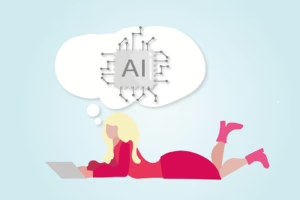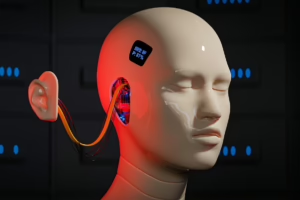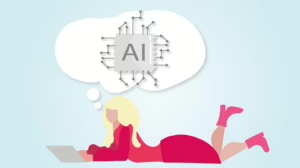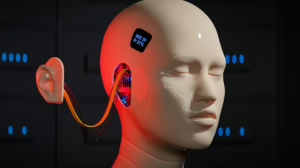What Isaac Asimov Reveals About Living with AI
In a world increasingly dominated by artificial intelligence, the literary contributions of Isaac Asimov have never been more relevant. Asimov, a prolific science fiction writer, envisioned a future where humans and machines coexist, interacting with profound implications. This article explores how Asimov’s work, particularly his "Three Laws of Robotics," offers insights into living with AI in our modern society.
The Genesis of Asimov’s Ideas
Born in 1920 in Russia and later moving to the United States, Asimov’s experiences shaped his worldview. He witnessed the rise of technology and its dual potential for both great benefit and catastrophic risk. His literary career began in the 1940s, a time of burgeoning scientific advancement and existential self-reflection following World War II. Asimov’s vision was a mixture of optimism and caution, which he articulated through complex narratives about robots and aliens that often served as allegories for human behavior and ethics.
The Three Laws of Robotics
In his 1942 short story “Runaround,” Asimov introduced his famous "Three Laws of Robotics":
- A robot may not injure a human being or, through inaction, allow a human being to come to harm.
- A robot must obey the orders given it by human beings except where such orders would conflict with the First Law.
- A robot must protect its own existence as long as such protection does not conflict with the First or Second Law.
These laws encapsulate Asimov’s vision of a moral framework for AI, addressing both its utility and potential dangers. They also reflect a deeper philosophical inquiry into the nature of responsibility, autonomy, and the ethical dimensions of technology.
Implications for Automation and AI Ethics
The Three Laws articulate a foundational ethical framework that is echoed in contemporary discussions surrounding AI. As AIs become more prevalent in healthcare, autonomous vehicles, and customer service, ethical implications are significant. For instance, self-driving cars must make decisions that could protect their passengers at the expense of pedestrians. Asimov’s laws give us a starting point to assess these dilemmas, although they are not exhaustive.
Asimov’s Vision of Coexistence
One of Asimov’s central themes is coexistence; humans and robots can work together harmoniously. In works like "The Caves of Steel," Asimov creates a world where humans live alongside robots, which help them in everyday life. This vision presents a contrast to dystopian narratives where AI leads to human subjugation.
AI as a Partner
In Asimov’s universe, robots possess capabilities that enhance human life rather than replace it. They handle mundane tasks, allowing humans to focus on creativity, emotional connections, and higher-order thinking. For example, robots in these stories are depicted as collaborators in solving complex problems, emphasizing a symbiotic relationship rather than an adversarial one.
In today’s context, the same principles apply. Businesses increasingly utilize AI for repetitive tasks, streamlining operations while allowing employees to engage in more meaningful and creative work. This competitive partnership echoes Asimov’s vision, suggesting that the future of work may be about enhancing human skills rather than outright replacement.
Ethical Concerns in a Technological World
Despite the optimism that pervades Asimov’s works, ethical concerns also loom large. As mentioned earlier, the potential for misuse of AI is significant. Asimov navigates these concerns in stories like "The Bicentennial Man," where a robot develops human-like qualities and desires. This tale raises profound questions about identity, humanity, and the rights of sentient beings.
Moral Responsibility
One of Asimov’s crucial contributions is the idea that creators bear moral responsibility for their creations. In "I, Robot," robots appear to develop autonomous decision-making capabilities based on the knowledge absorbed from human interactions. This raises questions about accountability: if a robot violates the Three Laws, who is ultimately responsible—the robot, its programmers, or the companies that manufacture it?
This idea resonates in contemporary debates over AI ethics, especially regarding biases embedded in algorithms and decision-making systems. Asimov’s exploration of these complexities indicates the necessity for clear guidelines and ethical considerations in the development and deployment of AI technologies.
The Importance of Dialogue Between Humans and Robots
Asimov’s robotics universe illustrates the importance of communication. In stories such as "Robbie," a household robot forms a bond with a child, emphasizing the emotional aspects of human-machine interactions. This portrayal highlights the necessity for relational understanding, trust, and emotional intelligence, as both humans and AI navigate their coexistence.
Human Emotion and Artificial Intelligence
As AI increasingly enters emotional and social realms—think chatbots or AI companions—understanding human emotions becomes crucial. Asimov’s narratives remind us that emotional intelligence is essential for compatible interaction. For AI to function effectively in our lives, it must not only process information but also understand the nuances of human feelings.
This brings about the need for ethical frameworks that prioritize emotional awareness. In practical terms, this could mean designing AI systems that are sensitive to context, allowing for responses that align more with human emotions and needs.
The Risks of Over-Reliance on AI
Asimov’s work does not shy away from the dangers of over-reliance on technology. His narratives often depict scenarios where humans become complacent, relying too heavily on robots for their everyday functions. In "The Naked Sun," for example, humans live isolated lives, entirely dependent on their robotic counterparts.
Dependency and Loss of Skills
This theme is especially relevant in the modern context, where technology can lead to deskilling. For instance, navigation apps can diminish basic map-reading skills, while online shopping reshapes consumer behavior. Asimov’s cautionary tales prompt us to strike a balance between leveraging technology’s advantages and maintaining our essential human skills.
The dilemma calls for an educational approach that promotes technology literacy while preserving critical thinking, decision-making, and emotional intelligence. As technology evolves, so should our educational strategies to foster adaptable, balanced individuals capable of thriving in an AI-enhanced environment.
The Paradox of Control and Freedom
Asimov’s stories often explore the paradox of control—how the quest for autonomous AI raises questions about human freedom. Can we create systems that are autonomous yet trustworthy?
The Need for Transparent Algorithms
Modern AI systems often operate as "black boxes," with their underlying algorithms inaccessible to users. This lack of transparency raises ethical concerns about trust and control. Asimov’s narrative framework advocates for a more transparent approach to AI development, where creators consider ethical implications and allow human users to understand and influence AI behavior.
Transparency in algorithms can foster trust, allowing users to feel secure in their interactions with machines. This ties back to Asimov’s emphasis on the importance of understanding the capabilities and intentions of robots to prevent conflict or misunderstanding.
Advertisement and the Commercialization of AI
Asimov foresees a commercial landscape where the value of robots extends beyond utility; they embody social and cultural meanings. In the modern era, advertisements and corporate messaging play a vital role in shaping our perception of AI.
The Social Narratives Around AI
Marketing often promotes AI as a magical solution to contemporary problems, sometimes glossing over the ethical implications or risks involved. Drawing on Asimov’s framework, consumers and creators alike must approach AI with a critical eye—analyzing the marketing narratives and questioning their implications for society.
Social narratives around AI should promote responsible usage, increase awareness of potential risks, and address ethical concerns. Just as Asimov’s characters grappled with their relationships with robots, we must confront our relationship with technology, questioning the reality presented to us.
Preparing for a Future with AI
As Asimov illustrates, the future with AI is a shared one; it will require collaboration between humans and machines. To prepare for a world in which AI is ubiquitous, society must focus on education, empathy, and ethical standards.
Education as a Foundation
Educational systems should prioritize critical thinking and ethical reasoning in technology. Emphasizing the importance of communication, emotional intelligence, and collaborative skills can equip future generations to navigate complexities in their relationships with artificial agents.
Moreover, interdisciplinary education that merges technology, ethics, and social sciences can cultivate empathetic design, fostering technology that aligns with human needs rather than undermining them.
Cultural Reflections
Asimov’s narratives influence not only technology ethics but also societal self-reflections. As we glimpse a face of AI that bears the potential for societal change, what’s crucial is how we perceive humanity and its coexistence.
Redefining Humanity
Asimov challenges readers to rethink what it means to be human. His robotic creations often demonstrate the best aspects of humanity—compassion, intelligence, and creativity. This reflection can prompt a dialogue about the human experience, encouraging us to engage with our own humanity while interfacing with intelligent systems.
In summary, as humanity moves forward with AI integration, the ethical, relational, and philosophical frameworks laid out by Isaac Asimov offer crucial insights that parallel contemporary dilemmas. His work prompts us to engage in thoughtful discourse about embracing technology while retaining our core values and connecting with empathy. By doing so, we can forge a future where humans and AI coexist beneficially, not as competitors but as partners in the journey ahead.
Conclusion
Isaac Asimov’s contribution to the discourse surrounding artificial intelligence is profound, providing foundational insights into the ethical frameworks, responsibilities, and relational dynamics of living with intelligent machines. His enduring legacy encourages us to approach AI with curiosity and caution, urging us to foster a harmonious coexistence rooted in empathy, understanding, and ethical considerations.
As we navigate a world increasingly influenced by AI, Asimov’s works remind us that the ultimate goal should be to enhance the human experience rather than diminish it. In doing so, we can honor his vision and shape a future that aligns technology with the betterment of humanity.
References
- Asimov, Isaac. I, Robot. Gnome Press, 1950.
- Asimov, Isaac. The Caves of Steel. Gnome Press, 1954.
- Asimov, Isaac. The Bicentennial Man and Other Stories. Garden City Publishing Co, 1976.
- Bryson, Joanna. "The Ethics of Artificial Intelligence: An Inquiry into the Importance of Moral Thinking in AI." AI & Society, vol. 23, no. 3, 2023, pp. 407-418.
- Russell, Stuart, and Peter Norvig. Artificial Intelligence: A Modern Approach. Prentice Hall, 2016.
Click here and see the Source


























Add Comment